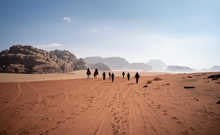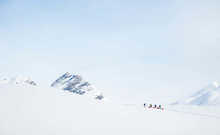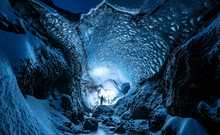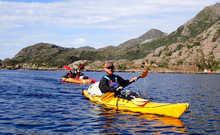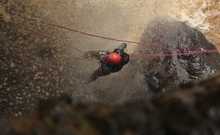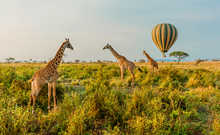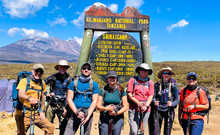Trekking in the Sahara Desert
Offering a totally unique adventure, trekking through the Sahara Desert is an experience like no other. It’s a common misconception that the desert is just miles of endless sand dunes with not much else, but this couldn’t be further from the truth. Yes, the interior of the Sahara Desert has sand as far as the eye can see in places but hidden on the fringes are towns and villages, plant and animal life, natural wonders and ancient remains. Rocky crags and tenacious vegetation sprout amongst the sea of sand and plenty of Sahara Desert creatures make their homes here.
Exploring this iconic region on foot is the best way to experience the magic of the desert, discover its secrets and learn more about this very special place. Read on for our guide to the Sahara Desert, where it is, what it’s like and how to best access the remote outer reaches.
Where is the Sahara Desert?
Much of northern Africa is covered by the Sahara Desert. Spanning 3,000 miles across 11 countries, the desert encompasses Senegal, Mauritania, Western Sahara and Morocco in the west, through Mali, Algeria, Niger, Tunisia, Chad and Libya in the interior and finally east into Egypt and Sudan. Stretching from the Atlantic Ocean in the west to the Mediterranean in the north, the Sahara reaches all the way to the Red Sea in the east. An invisible border separates the south of the desert from the countries beyond as the northern sands eventually give way to less arid terrain closer to the equator.
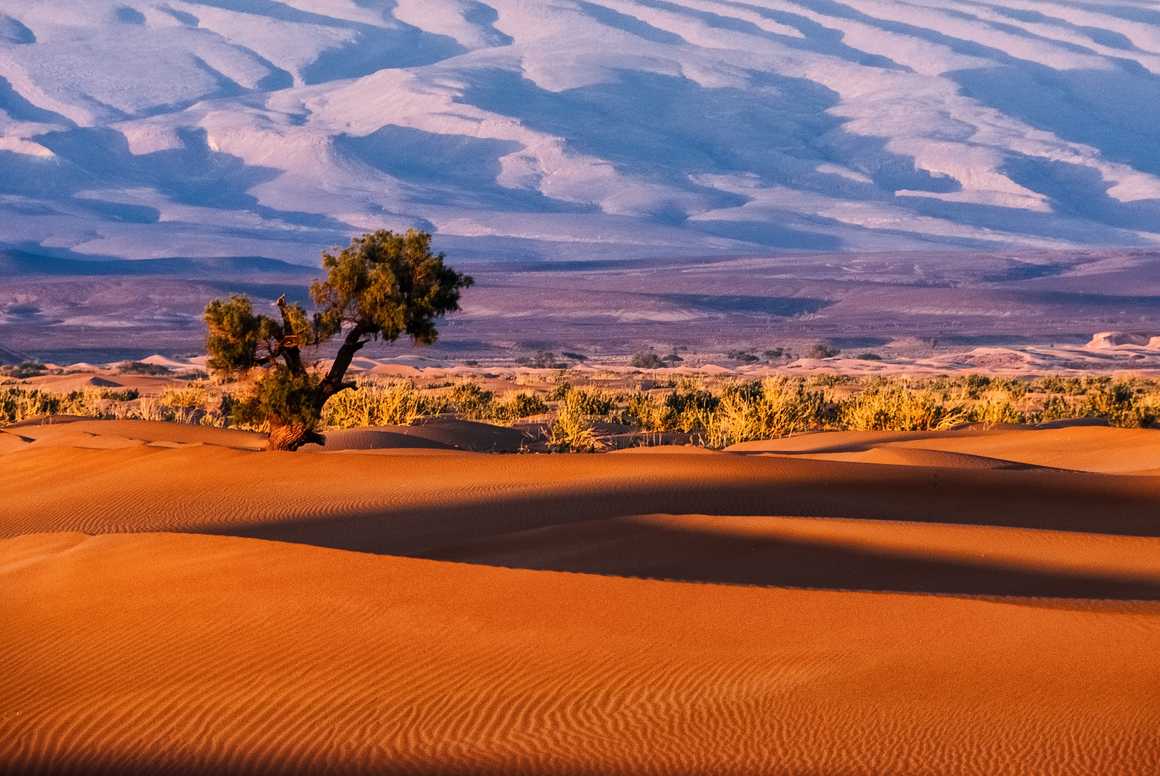
How big is the Sahara Desert?
More Sahara Desert facts - the Sahara Desert is a whopping 3.6 million square miles or 9.2 million square kilometres. It covers over 30% of the land mass of the continent of Africa and is the largest hot desert on the planet third, the largest desert in the world, after the Arctic and Antarctic. For reference, that’s approximately the same size as the United States of America or almost all of China!
How hot is the Sahara Desert?
In summer, it’s hot! Like 45-50°C (113-122°F) hot. But this isn’t the case all year round and the Sahara Desert climate fluctuates massively between summer and winter, and between daytime and nighttime.
Famously one of the harshest environments on Earth, daytime temperatures in the Sahara can reach over 50°C (122°F) in the height of summer between June and August, with the temperature of the sand and rock higher still. Average temperatures in the day typically range from 40-45°C (104-113°F), dropping only to 25°C (77°F) when the sun sets.
In wintertime, temperatures are much milder but still wonderfully warm. Average daytime temperatures during the winter months of November to February range from 18-25°C (64-77°F), dropping to close to freezing sometimes as the sun drops.
Wild Sahara Desert temperature swings aren’t uncommon either and often come with the setting of the sun or the winds that rampage across the sands. Annual rainfall is usually less than 100mm (4in) and the Sahara Desert weather is typically hot and dry. Sandstorms are not uncommon, brought on by strong winds, and offer the only variation in an otherwise consistent pattern of weather. These can cause all sorts of disruption and often flair up as quickly as they die down again.
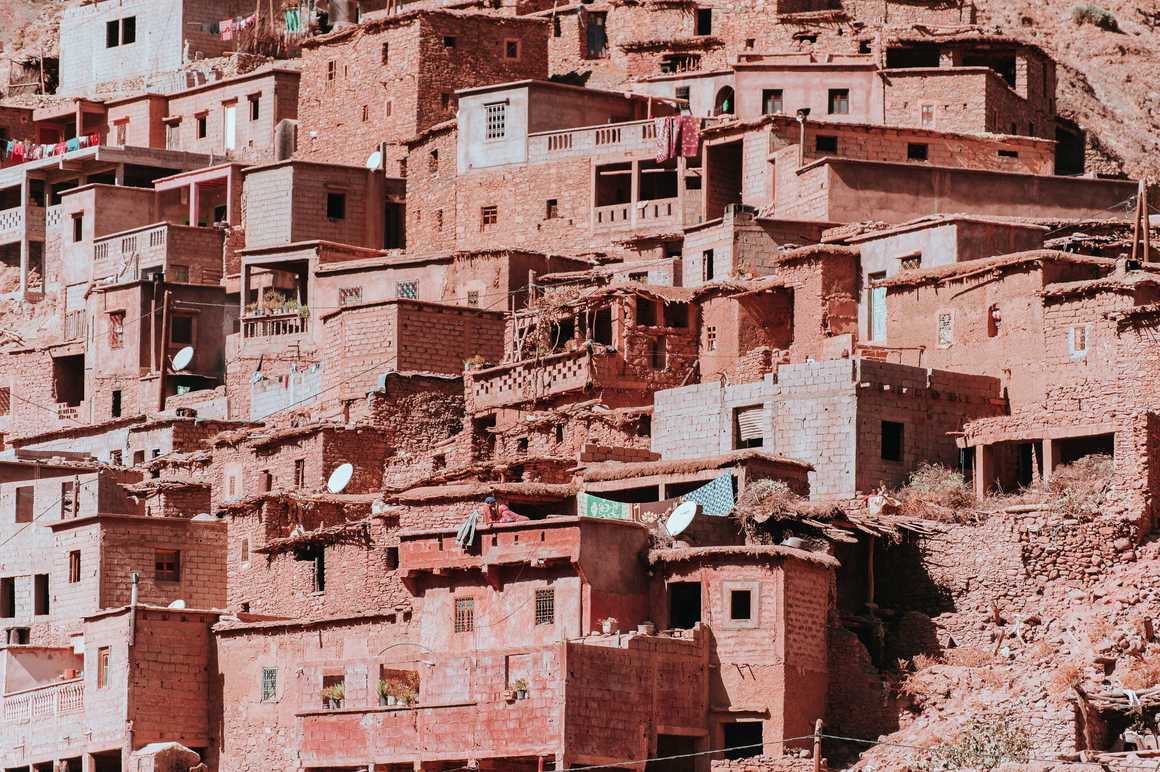
Best time to visit the Sahara
The average desert temperatures above mean that the shoulder months of March to May, and September to October, are the most pleasant times to visit. Daytime temperatures are warm, 18-25°C (64-77°F), but nighttime temperatures remain relatively mild without the same dramatic drops of summer and winter.
The best time to visit the Sahara all depends on what you want to do. The warm temperatures of spring and autumn may still be too hot for some people, so visiting in winter could be more appealing. Come prepared with plenty of layers to cope with any climate swings.
If you’re wanting to camp out under the stars amongst the red dunes, visiting in spring or autumn will ensure you don’t get too cold overnight.
We’d strongly recommend avoiding the peak summer months as these are the driest and hottest, and it will be uncomfortable spending any time exposed to the sun.
Who lives in the Sahara Desert?
Only 25% of the desert is actually made up of sand. The rest is rocky plateaus, dry riverbeds, gravel plains, mountains and various oases. As such, there are communities thriving in desert regions across all 11 countries, both within the interior of the Sahara and along the perimeter.
You may have heard of the Berber, the indigenous people of north Africa. Traditionally farmers, traders and herders, many Berbers still follow a nomadic lifestyle moving with livestock to better grazing and water access as necessary.
Other inhabitants live in settlements scattered throughout the desert connected by dusty, unpaved highways. Arabs, Tuareg, Toubou, and a handful of other indigenous people, still reside in the desert, often gathered in communities around oases or along trade routes.
It is thought that roughly 2.5 million people live in the Sahara Desert, working, trading and living in harmony with this seemingly inhospitable environment. Although many indigenous people are more sedentary than ever before, those who call the Sahara home preserve the unique culture, traditions and invaluable knowledge of the desert for visitors and for future generations.
A huge draw of visiting this incredible place is learning about how people coexist here, drawing on the natural resources of the desert, in cultures so completely different to western life.
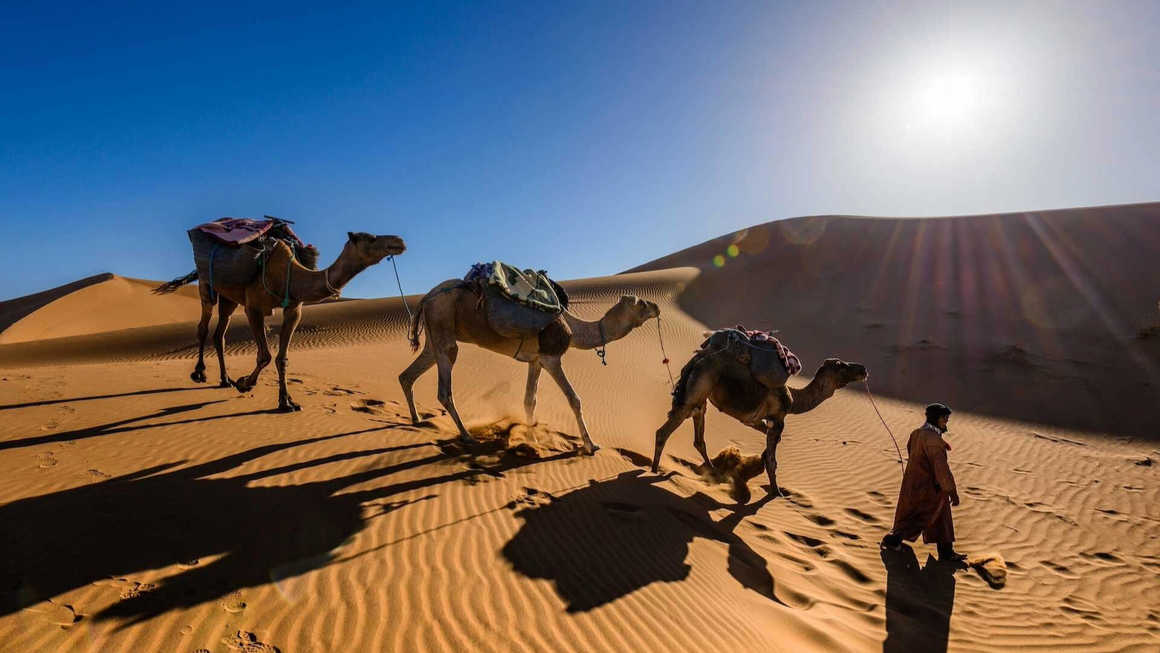
What animals live in the Sahara Desert?
Besides that familiar icon of the desert, the humble camel, there are plenty of desert animals in the Sahara that have adapted to life here, although not many can survive days without water. Antelope, foxes, lizards, snakes and geckos are all commonly spotted amongst the sands. Smaller still are the beetles, scorpions and locusts that survive in the hot, dry conditions. There are wolves and hyena living along the edges of the Sahara, scavenging on the gazelle, sheep and other mammals that graze here.
A surprising amount of birdlife can be found in the desert too, ranging from migratory birds passing through seasonally and species of sparrow, lark, finch and warbler, who have adapted to the arid conditions. Larger birds of prey also reside here, including species of falcon, buzzard and vulture for example, who prey on Sahara Desert animals to survive.
How to get to the Sahara Desert
You can access the Sahara Desert from all over the north of Africa, however there are some gateway countries that are more attractive to visit than others, for various reasons. Places such as Morocco, Tunisia and Egypt are the most common for visitors to experience the magnificent Sahara from, although you can still access the desert from others.
We recommend the Sahara Desert in Morocco as an excellent option - travel distances are shorter overall, safer, and their infrastructure is more navigable than that of neighbouring countries. A particular treat of accessing the Sahara from here is the epic journey across the Atlas Mountains of Morocco. You know we particularly love a mountain range!
Whilst you can’t do a day trip Sahara Desert tour from Marrakech, the distances are too far, you can do longer Sahara Desert trips from this exotic city. In fact, it’s one of the most popular places to begin Sahara Desert tours, as there is an international airport here, and the city offers plenty of entertainment before or afterwards.
A Sahara Desert Marrakech trip would need to be at least 3 days, but 5 or 6 days is better, to lessen the travel distances each day. Exploring the many sights, sounds and smells along the way is another reason for a longer Sahara Desert tour, so make sure you build in plenty of stopping time to make the most of your visit to Morocco.
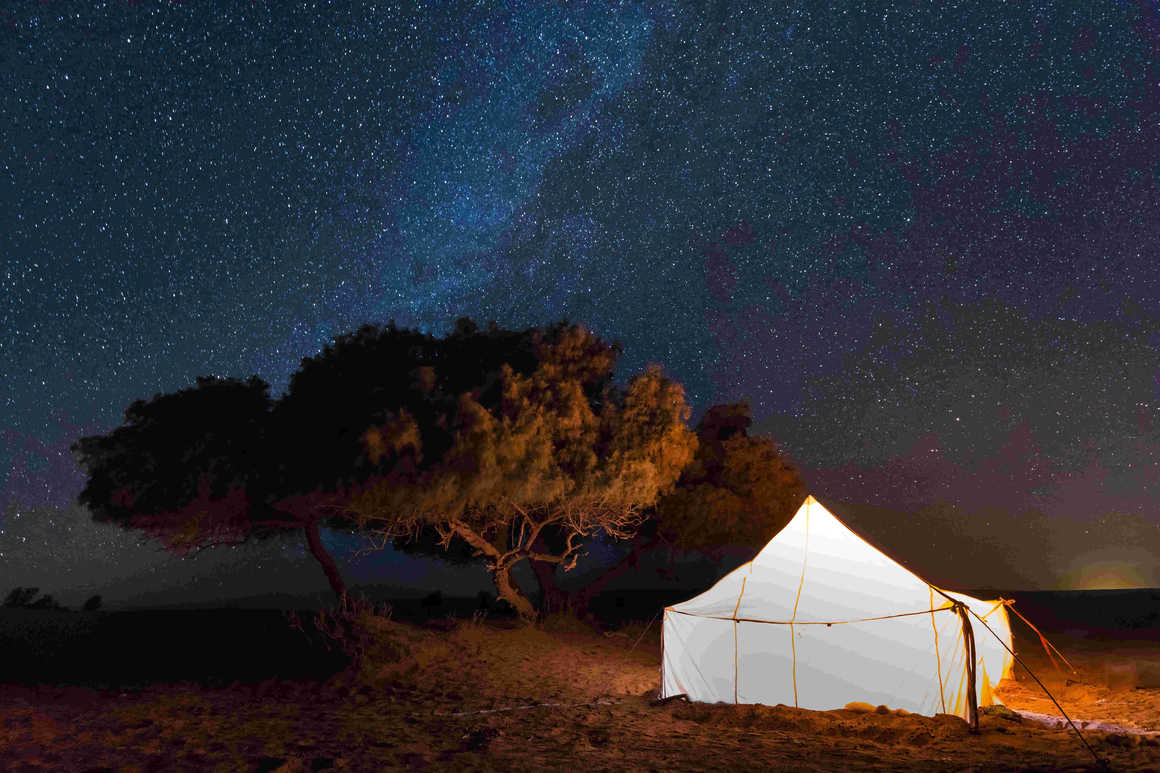
Things to do in the Sahara Desert
As one of the most sparsely populated places in the world, the Sahara Desert attracts intrepid travellers from all over who come to marvel at the rust-coloured dunes, bathe in the rhythm of the desert and experience a remoteness hard to find elsewhere. There are tons of adventure activities you can try here, from trekking and camping under the stars, to sandboarding, camel riding and quad biking.
Camel trekking
Camels are used for ferrying supplies as they can last days without water, making them a low-maintenance form of transportation. Riding a camel is one of the most popular ways to explore the desert, lolling over the dunes slowly as your eyes take in the vast landscapes void of pollution, noise or distraction. Most Sahara tours will include a chance to camp out in the desert which is much better for the animals as you know they’ll be getting rested overnight, which isn’t always the case.
Camping
Endless stars meet the horizon in the desert after the sun has gone down. There are few places where the night sky is this spectacular. Camping out in the desert, whether staying in a traditional Berber camp or not, you’ll have dinner cooked over fire, likely to the backdrop of local storytelling about life here, before reclining under a sparkling starry sky. This is one of the most popular things to do here and it’s super easy to see why.
Quad Biking
If the pace of camel trekking is a little too sedate, try quad biking in the Sahara instead! Race over the dunes and catch air flying down the crests as you zip across the sand. An exhilarating, if noisy, way to explore the desert that appeals to many.
Hiking in the Sahara
Personally, we prefer to experience the desert on two feet. Walking slowly over the dunes, spotting rocky landmarks, shy creatures and simply enjoying the solitude is a pleasure like no other. Trekking in the Sahara is such a unique experience – so different to hiking up mountains, crossing valleys and walking through jungle. If escaping humanity, seeking solace and getting a little peace and quiet is your bag, then head to Morocco to revel in the soulful sands of the Sahara.
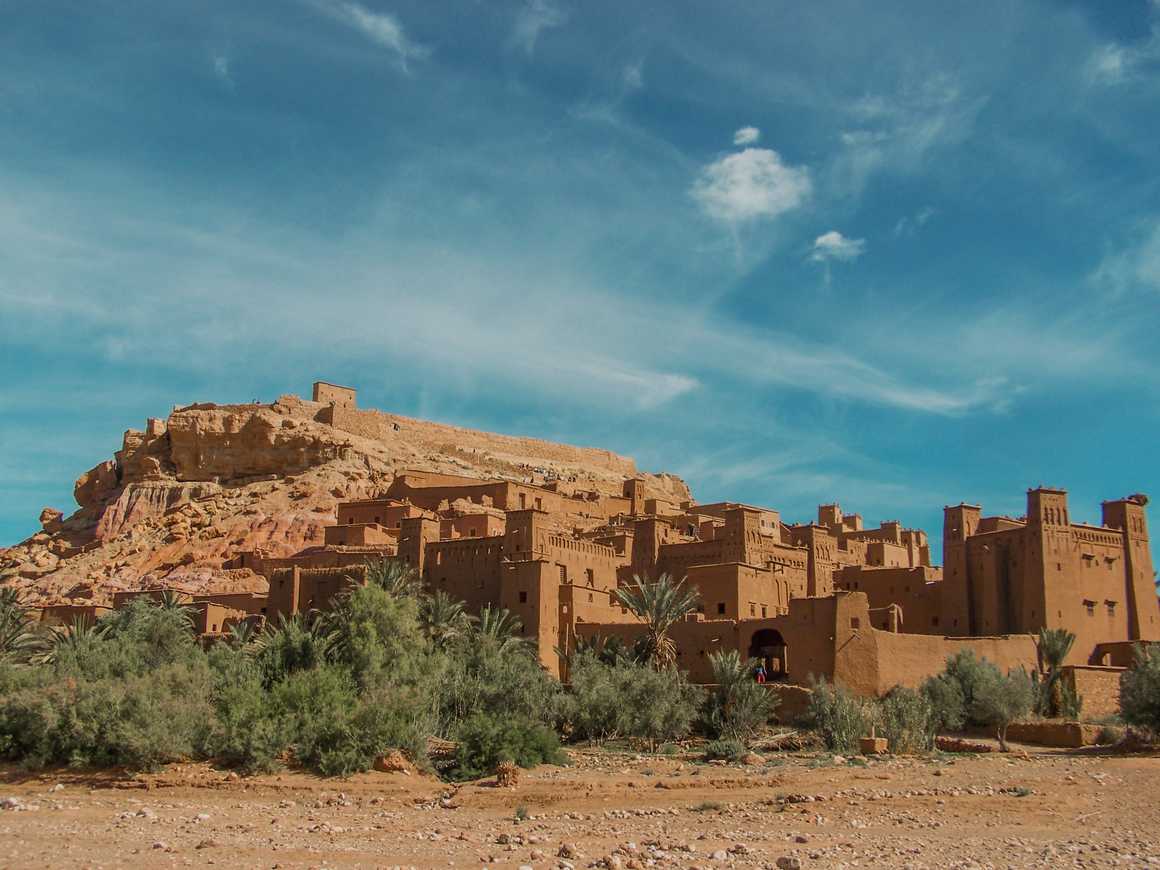
Top Sahara Desert travel tips
Visit during the northern hemisphere spring or summer for more tolerable climate conditions.
- Wear loose, light-coloured layers that reflect the sun.
- Pick a reputable company to travel with who ensures the welfare of their staff and animals.
- Be prepared to rough it – there are no luxurious home comforts here.
- Stay hydrated – drinking plenty of water is vital in hot climates.
- Respect the culture – many Saharan countries are Muslim so dressing, behaving and speaking respectfully is appreciated.
Visit the Sahara Desert with Kandoo Adventures
The team at Kandoo LOVE trekking – it’s how we spend all our free time! When we’re not talking about trekking destinations, we’re planning our next jaunt or helping others plot their next adventure. We firmly believe there is nowhere else in the world where you can fully immerse yourself in a wilderness as completely encompassing as the Sahara Desert. It’s one of those places where you don’t have to stay long to fall in love with the solitude, the local customs, the warm hospitality and the complete escape a Sahara Desert trip offers.
A true bucket-list experience, visiting the Sahara Desert is simply unforgettable. Check out our trips to Morocco below to find your next adventure here and discover an unrivalled destination. You can also find out more about this exotic country in our Guide to Morocco.
